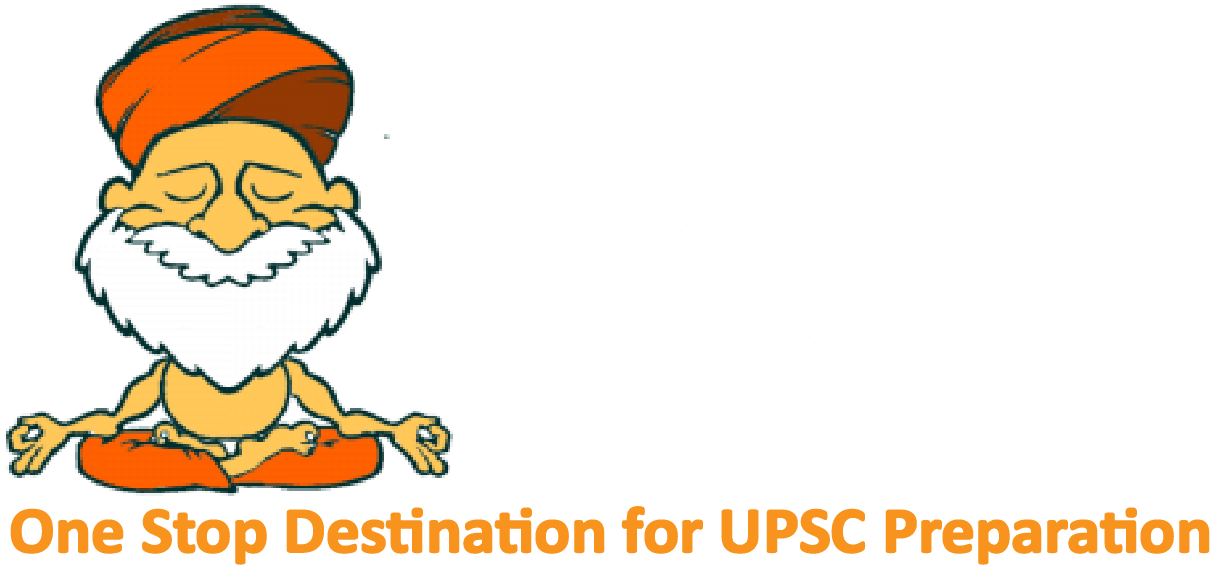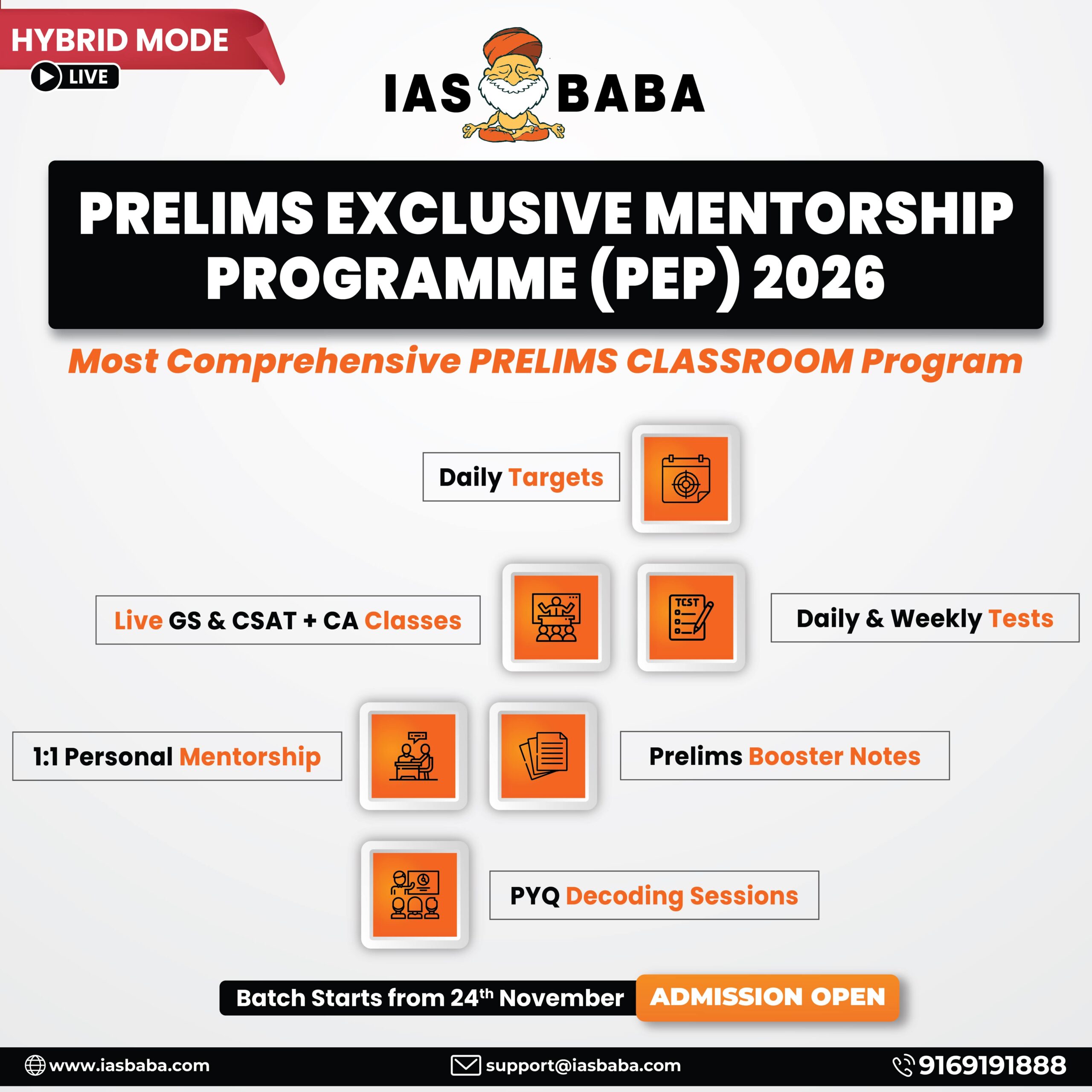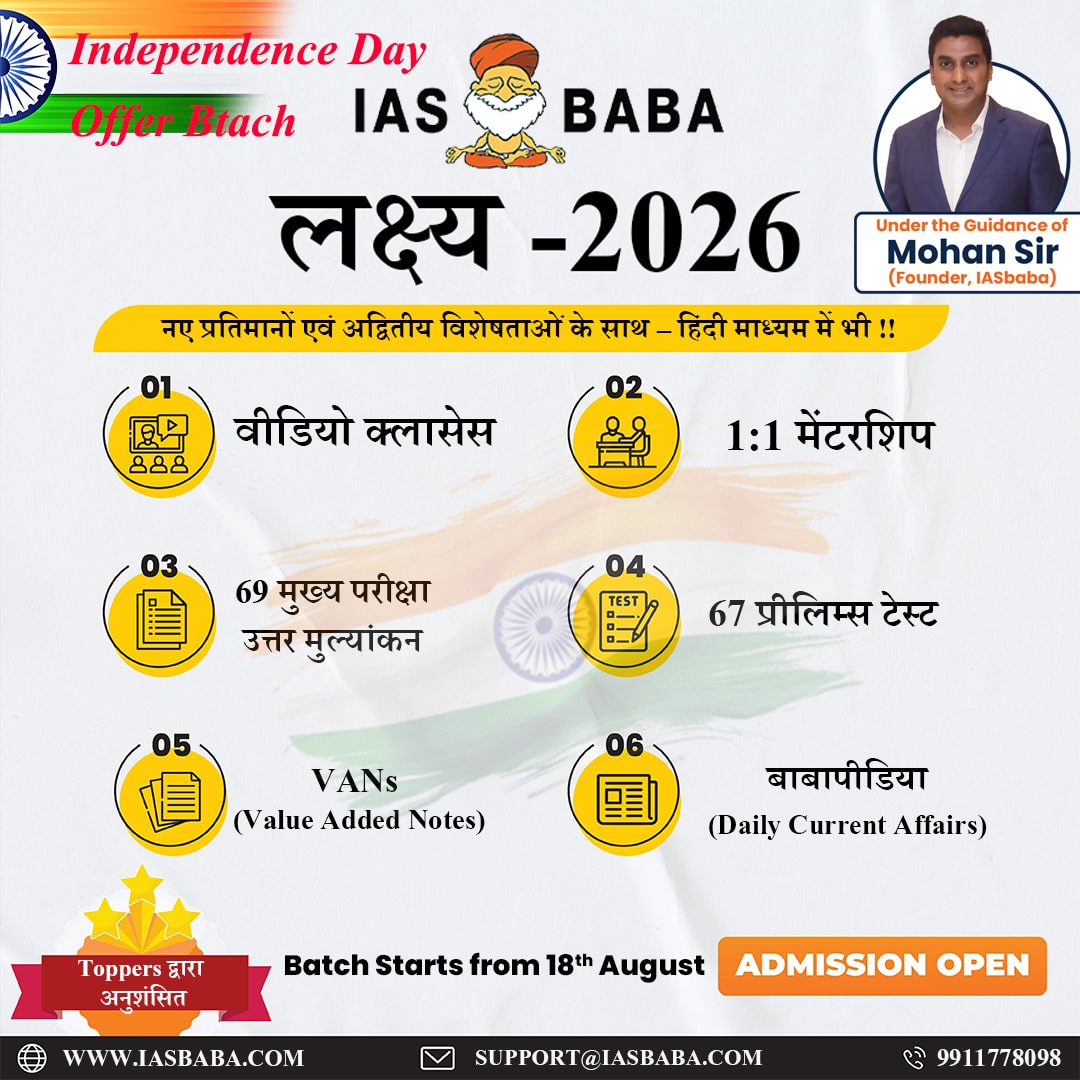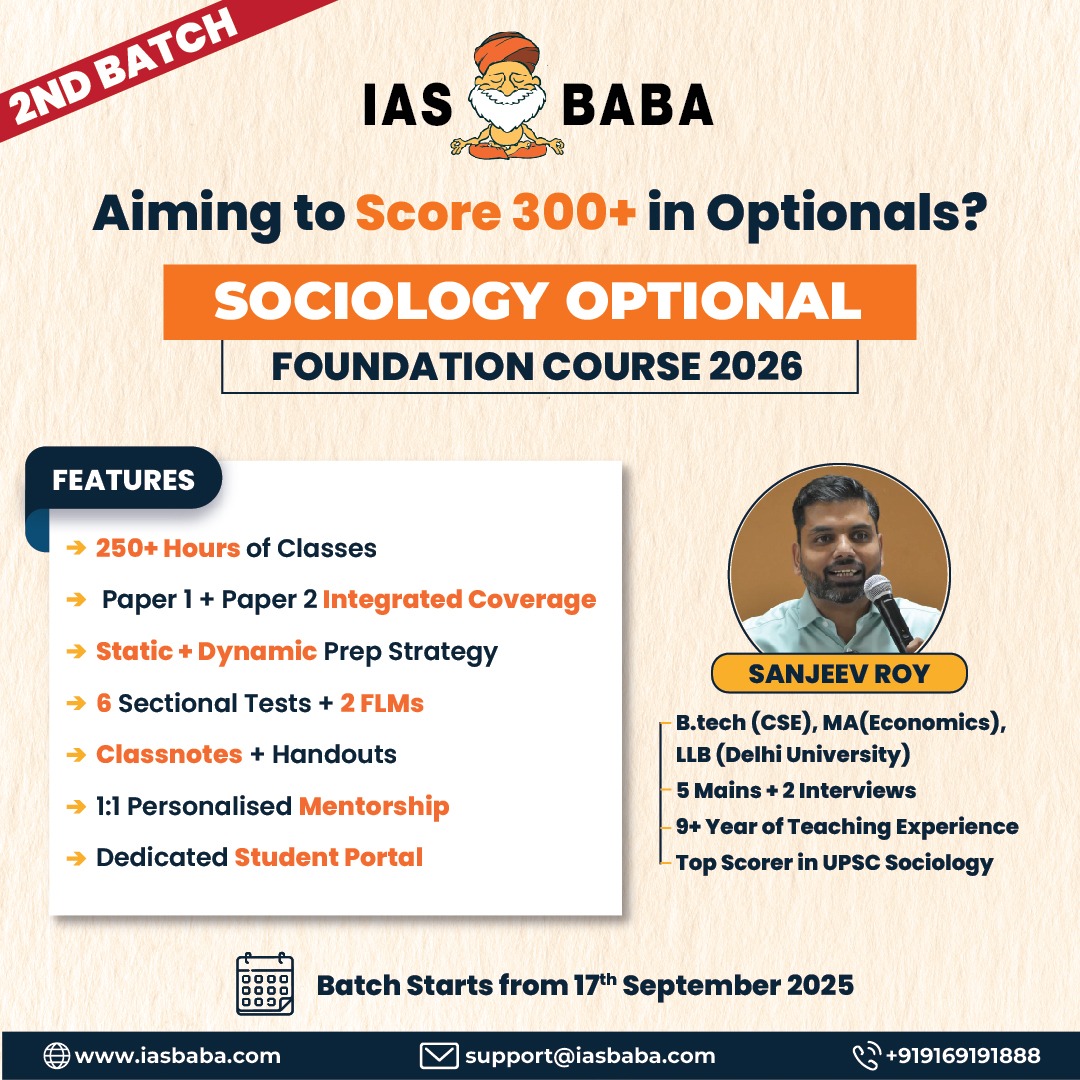IASbaba's Daily Current Affairs Analysis
Archives
(PRELIMS & MAINS Focus)
Category: INTERNATIONAL
Context: Manuscripts of the Bhagavad Gita and Bharata’s Natyashastra are among the 74 new additions to UNESCO’s Memory of the World Register this year.
Decoding the context: With the latest additions, the Register now contains 570 entries.
Learning Corner:
- The United Nations Educational, Scientific and Cultural Organization (UNESCO) launched the Memory of the World (MoW) Programme in 1992 with the aim of “guarding against the collective amnesia, calling upon the preservation of the valuable archive holdings and library collections all over the world, and ensuring their wide dissemination”.
- The central project of the MoW Programme was to create a compendium of documents — manuscripts, oral traditions, audio-visual materials, and library and archive holdings — which are of “world significance and outstanding universal value”. This is the MoW Register.
- Beginning in 1997, the Register has been biennally updated — with the exception of a lengthy gap between 2017 and 2023. In any year, at most two submissions from a country are added.
- The Register contains 13 submissions by India, including two joint-submissions. These range from the Rig Veda (added in 2005) and the collective works of the Shaivite philosopher Abhinavagupta (added in 2023), to the archives of the first summit meeting of the Non Aligned Movement in Belgrade in 1961 (added in 2023) and the archives of the Dutch East India Company (added in 2003).
- The latter two entries were joint submissions, which India made with other countries.
- This year’s entries champion India’s ancient literary heritage. Both are specific manuscripts — not the text in general — preserved by the Bhandarkar Oriental Research Institute, Pune.
Natyashastra:
- Attributed to the sage Bharata, Natyashastra is an ancient Sanskrit treatise on performing arts.
- Comprising 36,000 verses, the “Naṭyashastra embodies a comprehensive set of rules that define natya (drama), abhinaya (performance), rasa (aesthetic experience), bhava (emotion), sangita (music),” the UNESCO citation says. According to the citation in the Register, it was “codified around the 2nd century BCE.
Bhagavad Gita:
- Attributed to the sage Vyasa, Bhagavad Gita is a Sanskrit scripture comprising 700 verses that are organised in 18 chapters, embedded in the sixth book (Bhishma Parva) of the epic poem Mahabharata.
- “Bhagavad Gita is a central text in the continuous, cumulative ancient intellectual Indian tradition, synthesising various thought movements such as, Vedic, Buddhist, Jain, and Charvaka,” the UNESCO citation says.
Source : Indian Express
Category: NATIONAL
Context: The Ministry of External Affairs (MEA) recently announced that the Kailash Mansarovar Yatra, which has not taken place since 2020, will resume this year.
Decoding the context: While the yatra had initially been suspended due to the Covid-19 pandemic, deteriorating relations between India and China meant that it did not resume even after the pandemic. Ties between the two neighbours had nosedived following a number of border skirmishes in 2020, most notably on June 15 in the Galwan Valley in Ladakh.
Learning Corner:
- Lake Mansarovar, known locally as Mapam Yumtso, is a high altitude freshwater lake near Mount Kailash in the Ngari Prefecture of the Tibet Autonomous Region (TAR).
- Both the lake and the adjacent 6,638-metre high mountain, which Hindus believe is the home to Lord Shiva, are sacred in Hinduism, Buddhism, Jainism, and the Tibetan Bon religion.
- Pilgrims generally trek to Lake Manasarovar, and then circumambulate the nearby Mount Kailash.
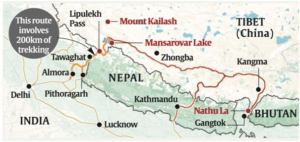
There are two primary routes to reach Lake Mansarovar from India.
- Lipulekh Pass Route: Lipulekh pass lies at an altitude of 5,115 metres, on the border between Uttarakhand and TAR, near the trijunction with Nepal. It is an ancient passageway between the Indian subcontinent and the Tibetan Plateau.
- While the Lipulekh pass route is the most direct way to get to Mansarovar from India — the lake is roughly 50 km from the border — the terrain makes the journey very challenging. Currently, this route entails roughly 200 km of hard trekking.
- Nathu La Pass Route: Nathu La pass lies at an altitude of 4,310 metres on the border between Sikkim and TAR. It is one of two mountain passes in the region — the other being Jelep La — that have connected Sikkim and Tibet since ancient times.
- The route to Mansarovar from Nathu La is much longer in terms of distance — close to 1,500 km. But it is fully motorable, meaning pilgrims can make it all the way to the lake without any trekking. (They would only need to trekk 35-40 km for the circumambulation of Mount Kailash).
- Nepal Route: No private operators function on the two official routes. There is, however, a third route through Nepal in which private companies do operate. In theory, this route has been accessible to Indians since 2023, when China reopened its border with Nepal. But visa and permit requirements, as well as high costs due to China-imposed fees, have meant that few have likely availed this option.
Source : Indian Express
Category: POLITY
Context: Vice President Jagdeep Dhankhar criticised the Supreme Court for a judgement setting a timeline for the President to sign the bills passed by the states. VP was referring to the April 8 judgement in the state of Tamil Nadu versus the governor case, which was seen as a win for the states across India.
Decoding the context: Questioning the judgement for setting a timeline for the President of India to sign bills passed by the states, Dhankhar called for accountability by the judiciary. He also described Article 142 of the Indian Constitution as, “nuclear missile against democratic forces available to the judiciary 24×7”.
Learning Corner:
Constitutional Provision:
- Article 142(1): The Supreme Court in the exercise of its jurisdiction may pass such decree or make such order as is necessary for doing complete justice in any cause or matter pending before it, and any decree so passed or order so made shall be enforceable throughout the territory of India.
- Article 142(2): Grants the Supreme Court powers to secure attendance, evidence, or enforce decrees, subject to law.
Scope and Powers:
- Provides the Supreme Court with extraordinary powers to issue orders beyond existing laws if required for justice, making it a unique judicial tool.
- Used in diverse cases: environmental protection, fundamental rights enforcement, and legislative-executive disputes.
- Examples:
- Union Carbide Case (1989): Ordered compensation for Bhopal gas tragedy victims, bypassing statutory limits.
- Coal Block Allocation Case (2014): Cancelled 204 coal block allocations to ensure transparency.
- Illegal Demolitions Guidelines (2024): Set norms to protect citizens’ rights, cited by Justice B.R. Gavai.
Significance:
- Judicial Flexibility: Enables the Supreme Court to address legal gaps, ensuring justice in complex cases (e.g., 4.8 crore pending cases, 2025).
- Federal Balance: In the 2025 case, it reinforced states’ rights against gubernatorial delays, strengthening cooperative federalism.
- Public Interest: Used in PILs to protect rights (e.g., environmental cases like Taj Trapezium, 1996).
Controversies:
- Judicial Overreach: Critics, including VP Dhankhar, argue Article 142 risks encroaching on legislative and executive domains, as seen in the 2025 ruling setting presidential timelines.
- Lack of Accountability: No clear limits on its use, raising concerns about subjective application (e.g., liquor ban on highways, 2016, later modified).
- Historical Debates: Similar criticisms arose in the National Judicial Appointments Commission (NJAC) Case (2015), where Article 142 was used to strike down NJAC, reinforcing the Collegium system.
Source : Indian Express
Category: HISTORY
Context: Champaran Satyagraha was launched by Mahatma Gandhi in April 1917. This year marks the 108th anniversary of the movement.
Decoding the context: It is commemorated as an awakening of Indian peasants against the colonial planters and policies in India. To a large extent, it drew inspiration from Gandhi’s South African experience.
Learning Corner:
Background and Causes
- Indigo was a celebrated product of India, down the centuries, raised and processed locally by peasants. But in the 17th century, European-owned slave plantations in the West Indies also began to produce it.
- When the English conquered Bengal, European indigo planters appeared soon enough. Obtaining zamindaris, they coerced peasants into raising indigo, for the dye to be processed out of the plants in their “factories”.
- In the early 19th century, white planters had forced cultivators in this part of present-day northwest Bihar into agreements known as teenkathia, under which they were obligated to grow indigo on 3/20ths of their landholdings.
- However, production of synthetic dye brought down the price of Bihari indigo and the profitability of its European plantations. As indigo prices and the planters’ profits fell, the planters began correspondingly to increase the rent-burden on the peasants, invoking their rights as zamindars.
- Alongside these exactions, the planters made full use of the traditional zamindari practice of begar, forced unpaid or ill-paid labour (abwabs), requisitioning at will the peasants’ cattle, plough and carts, or compelling them to provide labour for their plantations.
- Local farmer Rajkumar Shukla invited Gandhi in 1916 to investigate the plight of indigo farmers.
Events (April 1917):
- Gandhi arrived in Champaran on April 10, 1917, and began a fact-finding mission, meeting farmers in villages like Motihari and Bettiah.
- He defied British orders to leave, facing arrest threats, which galvanized local support.
- Used Satyagraha (non-violent resistance) to mobilize peasants, supported by leaders like Rajendra Prasad, Brajkishore Prasad, and Anugrah Narayan Sinha.
- Conducted surveys, documenting grievances of 8,000+ farmers, exposing forced cultivation, illegal taxes, and landlord oppression.
Outcomes:
- Champaran Agrarian Enquiry Committee (1917): Formed by the British due to Gandhi’s pressure, with Gandhi as a member, leading to reforms.
- Abolition of Tinkathia: The Champaran Agrarian Act, 1918, ended forced indigo cultivation, reduced rents, and refunded 25% of illegal dues to farmers.
Source : Indian Express
Category: GEOGRAPHY
Context: The Aral Sea, once the world’s fourth-largest lake, continues to show signs of geological changes long after its environmental collapse.
Decoding the context: The geological research conducted recently shows that the dried land of the basin has been experiencing increasing upward movement of Earth’s mantle over many decades since the water disappeared.
Learning Corner:
- Landlocked lake between Kazakhstan (north) and Uzbekistan (south)., the Aral Sea spanned 68,000 km² in 1960, fed by the Amu Darya and Syr Darya rivers.
- Known as the “Sea of Islands” due to over 1,100 islands, it supported thriving fisheries and local economies.
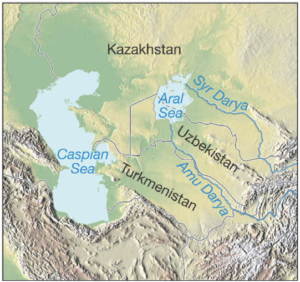
Environmental Collapse:
- Cause: Soviet-era diversion of Amu Darya and Syr Darya rivers for cotton irrigation in the 1960s reduced inflow, triggering rapid shrinkage.
- Extent: By 2014, the eastern basin dried completely, forming the Aralkum Desert (60,000 km²). By 2020, the sea was 10% of its original size, split into four basins: North Aral Sea, eastern and western South Aral Sea, and Barsakelmes Lake.
Impacts:
- Ecosystem: Loss of 20+ fish species, collapse of fisheries and desertification.
- Health: Toxic dust storms from Aralkum, carrying pesticides and salts, cause respiratory diseases, anemia (20x increase since 1960s), and high infant mortality.
- Climate: Regional climate shifts, with 2°C warmer summers, colder winters, and reduced precipitation, exacerbating water scarcity.
Geological Changes (2025 Research):
- Upward Mantle Movement: The loss of ~1,000 km³ of water (1.1 billion tons) since 1960 reduced surface weight, causing the Earth’s crust and upper mantle to rise at ~7 mm/year (2016-2020).
- Mechanism: Viscoelastic relaxation of the asthenosphere drives this uplift, similar to post-glacial rebound, expected to continue for decades.
Source : Economic Times
Practice MCQs
Q1.With reference to Article 142 of the Indian Constitution, consider the following statements:
- It empowers the Supreme Court to pass any order necessary for doing complete justice in any matter pending before it.
- The powers under Article 142 can be exercised only in criminal cases.
- The orders passed under Article 142 are enforceable throughout the territory of India.
Which of the statements given above is/are correct?
(a) 1 and 2 only
(b) 1 and 3 only
(c) 2 and 3 only
(d) 1, 2 and 3
Q2.With reference to the Champaran Satyagraha (1917), consider the following statements:
- It was the first civil disobedience movement launched by Mahatma Gandhi in India.
- It was launched primarily against the excessive land revenue demands made by the British government.
- The teenkathia system required peasants to grow indigo on a portion of their land compulsorily.
Which of the above statements is/are correct?
(a) 1 and 2 only
(b) 1 and 3 only
(c) 2 and 3 only
(d) 1, 2 and 3
Q3.With reference to the Aral Sea crisis, consider the following statements:
- It is a freshwater lake located in Central Asia.
- The shrinkage of the Aral Sea is primarily due to river diversion for irrigation.
- It borders Kazakhstan and Turkmenistan.
Which of the statements given above is/are correct?
(a) 1 and 2 only
(b) 2 only
(c) 1 and 3 only
(d) 2 and 3 only
Comment the answers to the above questions in the comment section below!!
ANSWERS FOR ’ Today’s – Daily Practice MCQs’ will be updated along with tomorrow’s Daily Current Affairs
ANSWERS FOR 18th April – Daily Practice MCQs
Q.1) – b
Q.2) – b
Q.3) – a

